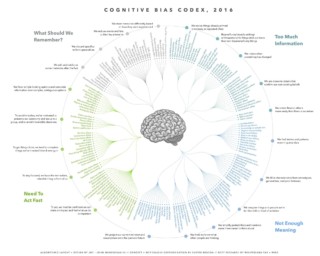Inclusion Through User Experience Design
2017’s World Usability Day, November 9th, is dedicated to INCLUSION. The phrase “Inclusion Through User Experience” covers a lot of ground both discretely with respect to designing individual products or features and in broad sweeping ways that impact the human experience in our collective society. In 2017 we have seen a lot of active work to define and reinforce the walls that divide us along lines of cultural identity, gender, disabled, poor, wealthy, etc. We need to acknowledge these divisions that set us apart from each other, not to establish rank, class, and social hierarchy, but to establish a common language to address issues that drive these divisions deeper into the fabric of our society. Once you can admit that we live “normalized” to ideas and concepts, real or imagined that wedge us further apart, you can start to challenge those ideas and concepts or design strategic disruptions of those norms.
Our various cognitive bias and perceived assumptions of “otherness” have led to unfortunate user experience in product, service, and feature designs (eh-hem… Snapchat). While other services are actively working on ways to combat these types of biases.
We’re fortunate to have a positive expression of “Inclusion” on the web which has been growing steadily in recent years. 508 Accessibility & WCAG compliance – which both drive standards for the accessibility of web content for individuals with hearing, sight, or other disabilities to access content and features on the web.
For our part, Limina will be celebrating World Usability Day by dedicating this Thursday 11/9/17 to provide Free 1 hour UX Evaluations for web/mobile product teams. We believe that the goal of user experience design is to remove barriers that keep people from using a product successfully, and inclusion is offering a unified, seamless experience for users, even though they have vastly different needs. And by extension, better UX can aid in the creation of more inclusive products and services.
Check out our World Usability Day Event and sign up for your UX Evaluation before they’re all gone!
If you can’t get your Free UX Evaluation booked, take a look at some of these great resources to help you build a more inclusive/universal design:
- The Center for Universal Design at North Carolina State University’s “7 Principles of Universal Design”
- The University of Cambridge’s “Inclusive Design Toolkit”
- The Design For All Foundation’s guidelines for “Design Tailored to Human Diversity”

On a more general note – start by challenging your cognitive biases. No one is saying this is easy, but if you can start by saying you could be wrong about your assumptions, you’re opening the door to discovering a path to validation.
